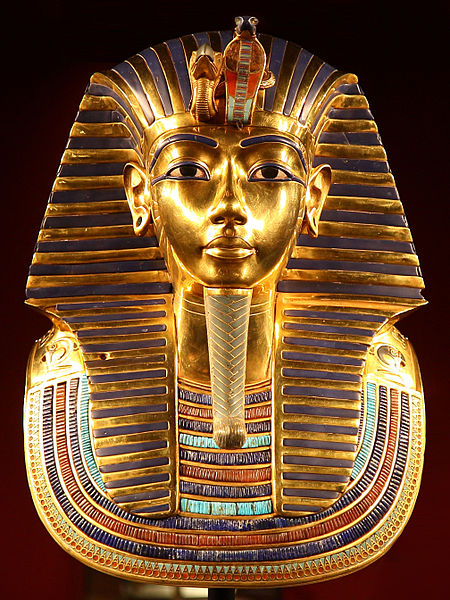It’s customary to review the events of the past year during the approach of the new one. The year 2016 has generally been one of highs and lows, some exciting and some not well understood.
In 2016 developments in archaeology were no different – ancient cooking mistakes, vampires, and mummies, and recreating the voice of an ice-age man, 2016 produced some intriguing finds in archaeology. As we look to the past in an effort to determine our future, we look at the great finds that made archaeology stand out in 2016.
Yet, among the great finds, there have also been some disappointments in the process – some on the scale of outright embarrassment such as when the Egyptian authorities were left red-faced for supporting the idea of the secret chamber in King Tuts’ tomb. As it turned out, the idea was deemed preposterous after extensive scans had shown there was no such hidden chamber.
That mishap has done nothing to dampen the claims that there are two voids in the Great Pyramid of Giza, and experts still wonder about the existence of other tombs within. It looks like 2017 will be the year that authorities press ahead with hi-tech scans in an effort to discover these voids. The exploration will use innovative techniques such as infrared thermography, and “cosmic ray” muon detectors.
Despite the lows, Egypt has been the subject of several of 2016s highlights, proving that Egypt remains an archaeological gold mine.
The oldest Egyptian Writings:

Writing is a form of communication, record keeping, or correspondence. In the ancient Red Sea port of Wadi al-Jarf, archaeologists have unveiled 4,500-year-old papyri scriptures. This is now the oldest known Egyptian writing uncovered to date.
Dated to the time of the Fourth Dynasty, the scriptures detail the lives of workers under Pharaoh Khufu. The Pharaoh, who had commissioned the building of the Great Pyramid of Giza, was the second Emperor of the Fourth Dynasty and is believed to have taken over the crown from his father. The scriptures reveal that workers constructed the Great Pyramid of Giza under the supervision of Choeps, as the Pharaoh was affectionately known.
Besides being the site of hieroglyphs, Egypt was a hotbed of archaeological finds. Along the banks of the Nile archaeologists found a 3,400-year-old necropolis. The ancient graveyard was discovered early in 2016 by the Gebel el Silsila Survey Project. There were more than 40 tombs inside, but they were in bad shape due to years of erosion. Besides these rock-cut tombs in a quarry at Gebel el Silsila there were still other extraordinary finds. A 4,500-year-old boat dedicated to commemorate the dead was found near the Abusir pyramids. And in keeping with the subject of the dead, a 3000-year-old, well-preserved mummy tightly wrapped with linen and lying in a brightly-colored sarcophagus was found near Luxor in the Temple of Millions of Years.
King Tut had a dagger from outer space:

Egypt continued to be the archaeological hotbed of discoveries of 2016, and King Tut is still making the news. At least his accessories have. Since the discovery of his tomb, there has been much fascination around the world with the boy king from the Eighteenth Dynasty. To this may be added an alien conspiracy as scientists and archaeologists used X-ray technology to analyze the boy king’s mummified tomb. They were able to confirm that the dagger he was buried with was made from a meteorite. The analysis was done outside of Egypt by Italian and Egyptian authorities.
The legs which once belonged to the wife of Egypt’s Napoleon:

One of the longest reigning Pharaohs of the Nineteenth Dynasty, and once the most revered Emperors of Egypt, King Ramses II’s wife Queen Nefertari has made it onto the list of Egypt’s archaeological studies in 2016. Her 3,200-year-old mummified and dismembered legs were discovered to have been the subject of tomb raiders. The astounding revelation was confirmed by Frank Rühli, who was part of an international team working at Italy’s Egyptian Museum. He is also the head of the Institute of Evolutionary Medicine at the University of Zurich in Switzerland. The ancient Queen is the first and most beloved Queen of Ramses II. She has appeared on many buildings and depictions throughout the ancient architecture of Egypt.
Arguably one of the most intriguing finds of 2016 was discovered in Cambridgeshire in the UK. What researchers have now called “Britain’s Own Pompeii,” a 3,000-year-old settlement destroyed by fire, is providing insight into domestic life during the Bronze Age.
The town and its contents were destroyed by fire, and the townspeople abandoned it in order to escape the blaze. The ruins fell into the river, and the remains of it were well preserved because of the river silt and clay.
The preservation was so good that researchers found a time capsule of jewelry, food in its pots, and clothes. One amazing item retrieved was the most complete wheel in British history. The capsule was six feet below ground level. The researchers were also able to find in the waterlogged sediments the footprints left by victims escaping the fire.
Delicious dishes from Ancient Civilizations:

It seems that during 2016 food was one of the main topics of discussion. And for a good reason, as archaeologists are able to determine a lot from food left behind. In 2016 there were many discoveries along those lines of ancient master chefs. One of the discoveries was a 3,000-year-old cooking mistake. Wonder what Gordon Ramsay would say about burning cheese? In Jutland, Denmark researchers found a clay pot at the bottom of a pit. The clay pot contained burnt cheese, which was flung out probably in anger at the mishap.
It seems the ancient people from Denmark could have taken note from Cumae, where archaeologists found the first non-stick pan. The pans, produced 2000 years ago, may have been the precursor to the non-stick pan — “Cumanae testae” or “Cumanae patellae” was pottery with a red coating that prevented food from sticking. Examples were discovered 12 miles west of Naples in the city of Cumae.
Among the other delicious finds this year was that salmon was on the menu 12,000 years ago in North America. That’s not all – butter that smelled like fermented cheese was found in Ireland. And at the bottom of the Baltic sea archaeologists found a slab of cheese in a 340-year-old Swedish shipwreck.
Ancient Fashion:

Fashion has been a major consideration from the beginning of time. 2016 hosted the major discovery of the world’s first and oldest dress. A 5000-year-old linen shirt, also known as a Tarkhan Dress, was discovered. The dress is now a bit decayed but would have been all the rage even in today’s cut-throat fashion world. Among the other fashion items found were a gold bead bracelet unearthed in Bulgaria that was more than 6,500 years old. To go with the dress, how about a 5,800-year-old snowshoe still in mint condition and found in the Italian Alps?
Underwater Expeditions yielded even more treasure. Underwater archaeology had seen new highs in 2016. The most notable of which is the skeletal remains found on the Antikythera shipwreck. These are the first human remains found during the age of DNA analysis, and they are believed to be 2000 years old. The ship, which is also known as the “The Titanic of the Ancient World”, sank off the coast of Antikythera in Greece. The shipwreck was first discovered by sponge divers 100 years ago and has now become a modern marvel – from it has been recovered what could be the world’s oldest computer, the “Antikythera Mechanism.”
The Greek Isles were a hotbed of underwater discoveries and ranked high among the discoveries of 2016. A ship graveyard among the 13 Islands of Fourni Archipelago was discovered, adding 23 new shipwrecks to the 22 found in 2015. These discoveries now make this area the shipwreck capital of the world.
The Ice-Man speaks:

This has to be one of the most amazing recreations of our historical ancestors of the twenty-first century. The ice-man, affectionately known as Ötzi, “spoke” for the first time since he died 5,300 years ago. He spoke, in Italian, on the 25th anniversary of his discovery. His voice was reconstructed to the best approximation possible with today’s science and technology.
This has been a year that has challenged many previous theories and historical data. One in particular that sticks out concerns a major victory in the field of medicine. The small-pox virus which ravaged many a nation has been uncovered in a child mummy from Vilnius, Lithuania. The seventeenth century child has rewritten the history books, being the oldest known victim to have the virus. Based on this discovery, the timeline of the first appearance of the disease is now believed to between 1664 and 1665.
Burial traditions that raise hairs and questions:

This year would not be complete without a creepy story or two. Everyone should be familiar with the fabled mummies curse, but how about a spike through the neck and spine to keep the bodies in their graves? This was the state of remains found in excavated graves in Poland. The bodies show that most likely it was feared that they would rise from their graves.
This was not the only bizarre burial ritual uncovered this year. In central Tuscany an iron-bound set of skeletal remains was found. This was out of the ordinary for Etruscan people known for their fun-loving and gentle natures. The body was heavily bound with 5 pound weighted chains and shackles. Surely this individual was not as carefree and fun-loving as the other inhabitants, Seeker reported.
Read another story from us: Some of the Most Amazing Metal Detector Finds in History
In addition to these obscure burial rituals, Peru turned up some horrific ones. Footless children were found buried in an ancient temple near Peru. And Turkey turned up its own horror story of Iron Age skeletons buried along with savagely tortured and butchered turtles.
